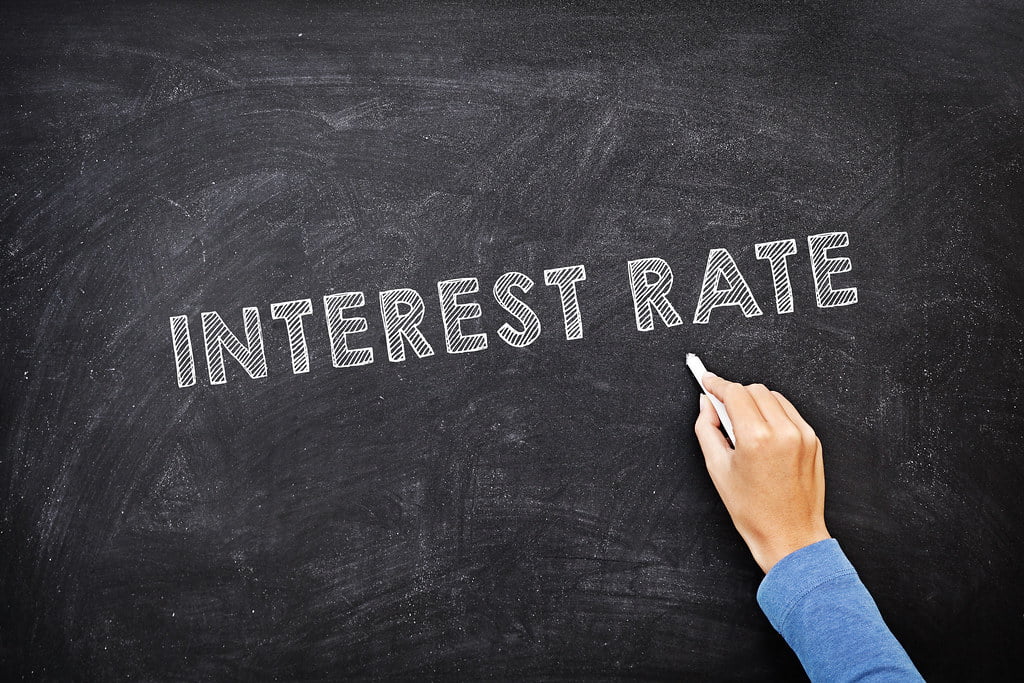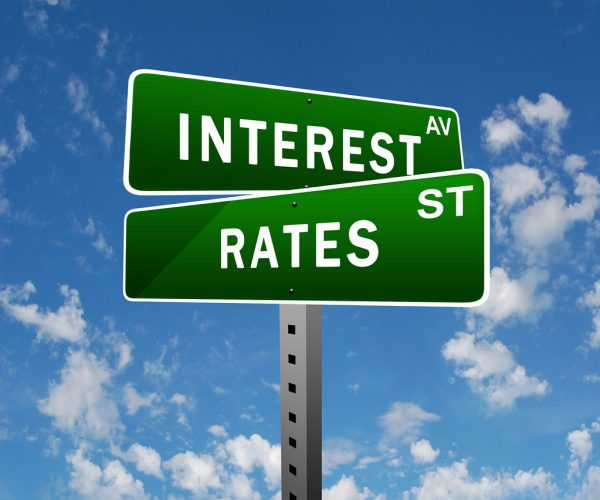Introduction
Are you an investor looking to understand the impact of interest rates on the cryptocurrency market? The relationship between interest rates and crypto prices can be complex, but with the right knowledge, you can make informed investment decisions. In this guide, we will explore how interest rates impact cryptocurrency, including borrowing costs and market sentiment, as well as their relationship with inflation and central bank policies.
Key Takeaways:
- Interest rates can have a significant impact on the cryptocurrency market.
- Changes in interest rates can affect borrowing costs, market sentiment, and overall economic growth.
- Cryptocurrencies, such as Bitcoin, are often viewed as potential hedges against inflation.
- Central bank policies, particularly decisions to raise interest rates, can influence the cryptocurrency market.
The Basics of Interest Rates and Cryptocurrency
Before we dive into how interest rates impact the cryptocurrency market, it’s important to understand what interest rates are and how they are determined. An interest rate is the cost of borrowing money, expressed as a percentage of the amount borrowed. In the crypto market, interest rates are typically tied to the lending and borrowing of cryptocurrency assets.

The Federal Reserve plays a crucial role in determining interest rates in the United States, as it sets the federal funds rate, which is the interest rate banks charge each other for overnight loans. Changes in the federal funds rate can have a ripple effect on interest rates across the economy, including in the crypto market.
For investors, understanding changes in interest rates is important as they may impact the borrowing and lending of cryptocurrency assets. For example, if interest rates rise, it may become more expensive to borrow cryptocurrency, which could impact market demand and ultimately affect the price of certain assets.
The Federal Reserve and Interest Rates in the Crypto Market
The Federal Reserve’s interest rate decisions can have a significant impact on the crypto market. When the Fed raises interest rates, it can lead investors to move capital out of high-risk assets like cryptocurrency and into lower-risk investments like bonds, which can lead to decreased demand and lower prices for digital assets.
However, it’s important to note that the relationship between interest rates and cryptocurrency is complex and can be influenced by a variety of factors beyond the Fed’s decisions, including global economic conditions and regulatory developments.
Borrowing and Investing in Cryptocurrency
Changes in interest rates can also impact the cost of borrowing and investing in cryptocurrency. For investors looking to borrow cryptocurrency, rising interest rates can mean higher borrowing costs, which can impact profit margins and investment decisions. Similarly, when interest rates fall, it can make borrowing more affordable, potentially leading to increased market demand and higher asset prices.
Overall, keeping a close eye on interest rate developments and how they impact the crypto market can be crucial for investors looking to make informed decisions and adapt to changing market conditions.
Interest Rates and Crypto Prices: Cause and Effect
Interest rates have a significant impact on the currency market, including cryptocurrencies like Bitcoin. Understanding how interest rates impact crypto prices is essential for investors looking to make informed decisions. Changes in interest rates can have a noticeable effect on the value of digital assets.

For example, if interest rates rise, borrowing costs increase, leading to less spending and less money circulating in the economy. This decrease in economic activity can result in less demand for cryptocurrency, leading to a decrease in prices. Similarly, if interest rates fall, borrowing costs decrease, leading to increased spending and more money circulating in the economy. This increase in economic activity can lead to more demand for cryptocurrency, leading to an increase in prices.
Additionally, changes in interest rates can affect market sentiment, potentially leading to increased volatility in the crypto market. For instance, if the Federal Reserve raises interest rates, it may signal to investors that the economy is strong, leading to more investment and confidence. Conversely, if interest rates are lowered, it may signal that the economy is weak, leading to more caution and less investment.
Therefore, it’s essential to keep track of interest rate changes and how they may impact cryptocurrency prices and market sentiment. It can help you make more informed investment decisions and manage risk effectively.
Borrowing Costs and Economic Growth
Interest rates can have a significant impact on borrowing costs for both individuals and businesses. When interest rates rise, borrowing becomes more expensive, which can lead to decreased demand for loans and potentially slower economic growth.

The Federal Reserve interest rate is a crucial factor in determining borrowing costs, as it directly influences the interest rates that banks charge their customers. If the Fed raises interest rates, banks are likely to follow suit, leading to an overall increase in borrowing costs.
For individuals, higher borrowing costs can lead to decreased spending and potentially slower economic growth. This may have a spillover effect on businesses as well, as decreased consumer spending can lead to lower sales and decreased profitability.
However, some argue that higher interest rates can actually lead to increased investment and economic activity in the long run. By making borrowing more expensive, higher interest rates can lead to a more cautious approach to borrowing, potentially leading to more responsible spending and investment decisions.
In short, changes in interest rates can have a significant impact on borrowing costs and ultimately on economic growth. Keep an eye on the Federal Reserve’s interest rate decisions and potential rate hikes to stay informed about potential borrowing cost changes.
Hedging Against Inflation with Cryptocurrencies
Inflation can have a significant negative impact on traditional currencies and other assets like stocks and bonds. But what about cryptocurrencies? The decentralized and limited nature of cryptocurrencies like Bitcoin has made them a potentially attractive hedge against high inflation.

As inflation rates rise, the value of traditional currencies often decreases, leaving investors vulnerable to the effects of inflation. Cryptocurrencies, on the other hand, have a fixed supply, meaning they are immune to the inflationary pressures that affect traditional currencies.
Investing in cryptocurrencies could help you hedge against high inflation by providing a store of value that is not subject to the same inflationary pressures as traditional assets. However, it’s important to remember that cryptocurrencies can also be quite volatile, which may not be suitable for all investors.
If you are considering using cryptocurrencies to hedge against inflation, be sure to educate yourself on the risks and benefits and consult with a qualified financial advisor.
Keywords: inflation, high inflation, hedge against inflation, inflation rate, negative impact
Central Banks, Monetary Policies, and Cryptocurrency Markets
Central banks wield substantial influence in determining monetary policies that shape interest rates. These policies play a significant role in shaping the economic environment and, as a result, impact the cryptocurrency market. Changes in interest rates can prompt central banks to adjust their monetary policies, leading to a domino effect that can ripple throughout the financial world.

For instance, if a central bank decides to raise interest rates to curb inflation, it can lead to borrowing costs going higher. As a result, investors and businesses may start to avoid taking on debt, creating a ripple effect that can negatively impact asset prices. Conversely, lowering interest rates can result in lower borrowing costs, which can incentivize people to take on debt and invest in assets such as cryptocurrencies.
The relationship between central banks and cryptocurrency markets is complex and multifaceted. There is no doubt that central bank decisions carry substantial weight and can have significant ramifications for investors and traders alike.
The Influence of Monetary Policies on Cryptocurrency Markets
The relationship between monetary policies and cryptocurrency markets is particularly noteworthy. One significant example is how the Federal Reserve’s interest rate decisions can impact the value of digital assets like Bitcoin.
When the Federal Reserve signaled a potential rate hike in 2018, it prompted a significant sell-off in the crypto market, leading to a sharp decline in asset prices. Investors and traders alike were spooked by the potential consequences of the rate hike and its impact on the broader economy, leading them to sell off their digital assets in droves.
It’s essential to note that not all central bank decisions will have such a significant impact on the cryptocurrency market. Still, it’s crucial to stay informed about monetary policy developments and their potential impact on asset prices.
The Future of Cryptocurrency and Interest Rates
The intersection of interest rates and cryptocurrency is still evolving, and it remains to be seen how it will shape the future of the market. As financial markets continue to evolve and the economic environment fluctuates, there is no doubt that changes in interest rates can have a significant impact on asset prices and market volatility.
Investors should remain vigilant about monetary policy developments and how they may influence the cryptocurrency market. Staying informed and adapting strategies accordingly is crucial to maximizing your investment potential in this dynamic and ever-changing industry.
The Future of Cryptocurrency and Interest Rates
As the financial markets continue to evolve, the intersection between interest rates and cryptocurrency is becoming increasingly important to consider. The economic environment and market volatility can have a significant impact on asset prices, including those of cryptocurrencies.

It’s important to stay informed about the potential impact of interest rate changes on the crypto market. As central banks make monetary policy decisions, investors should be aware of how those decisions may affect the digital asset space.
Looking ahead, the relationship between interest rates and cryptocurrencies may continue to evolve. It’s possible that digital assets will become more mainstream and continue to gain acceptance in the financial world. On the other hand, regulatory changes may introduce more uncertainty and volatility in the market.
Ultimately, the future of cryptocurrency and interest rates is uncertain, but staying informed and adaptable can help investors navigate the ever-changing landscape.
Conclusion
Understanding the impact of interest rates on cryptocurrency can be the key to success in the ever-changing crypto market. By grasping the relationship between interest rates, borrowing costs, market sentiment, and inflation, you can make informed decisions and adapt your strategies to achieve better investment outcomes.
It’s important to stay informed about interest rate developments and their influence on the cryptocurrency market. Keep an eye on economic indicators and follow the news to understand how evolving financial markets and changes in the economic environment can shape the relationship between interest rates and crypto prices.
In conclusion, interest rates have a significant impact on the cryptocurrency market. Changes in interest rates can lead to increased market volatility, impacting crypto prices, borrowing costs, and overall market sentiment. As an investor, it’s crucial to keep a close eye on interest rate movements and create a strategy to adapt to any changes in the market.
FAQ
Q: How do interest rates affect cryptocurrency?
A: Interest rates can have a significant impact on cryptocurrency. Changes in interest rates can influence the overall market sentiment and potentially lead to increased volatility in the crypto market. Additionally, interest rates can impact borrowing costs, inflation, and the value of cryptocurrencies.
Q: What is the relationship between interest rates and cryptocurrency prices?
A: Interest rates can affect the value of cryptocurrencies, including Bitcoin. Changes in interest rates can impact market sentiment, potentially leading to fluctuations in crypto prices. Investors often analyze the relationship between interest rates and crypto prices to make informed investment decisions.
Q: How do interest rates impact borrowing costs for individuals and businesses?
A: Interest rate changes can influence borrowing costs for individuals and businesses. Rate hikes and increased interest rates can result in higher borrowing costs, making it more expensive to take out loans or finance projects. Understanding the impact of interest rates on borrowing costs is crucial for financial planning.
Q: Can investing in cryptocurrencies serve as a hedge against inflation?
A: Cryptocurrencies, including Bitcoin, are often seen as potential hedges against inflation. Inflation can negatively impact traditional fiat currencies, while cryptocurrencies may offer a decentralized alternative. Investing in crypto assets can provide a way to mitigate the negative effects of inflation on wealth and diversify one’s portfolio.
Q: How do changes in central bank policies influence the cryptocurrency market?
A: Central bank policies, particularly changes in interest rates, can impact the cryptocurrency market. Monetary policy decisions made by central banks can influence market sentiment, asset prices, and overall market conditions. Understanding the potential impact of central bank policies on cryptocurrency markets is essential for investors.
Q: What is the future of cryptocurrency in relation to interest rates?
A: The future of cryptocurrency and interest rates is an evolving area of interest. As financial markets and economic environments continue to change, the relationship between interest rates and crypto prices may continue to evolve. Future interest rate changes can have a significant impact on asset prices and market volatility, making it crucial for investors to stay informed.
